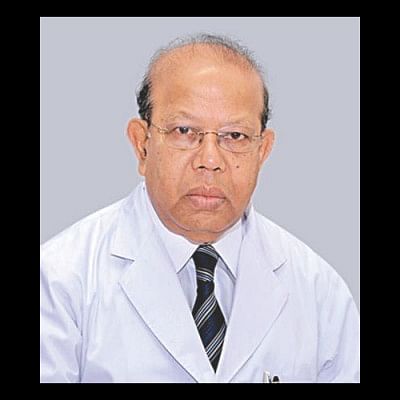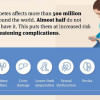“Access to insulin is a human right”

Please give us an overview of the prevalence of diabetes in Bangladesh.
Diabetes is a global epidemic, and this epidemic is rising faster in developing countries like Bangladesh than in developed ones. Diabetes was recognised as an epidemic first by the International Diabetes Federation (IDF) and then subsequently by the World Health Organization (WHO). In 2006 as Secretary General of the Diabetic Association of Bangladesh, I requested the government of Bangladesh to raise this issue to the United Nations for a UN Day.
Diabetes evolves as a combination of two factors: genetic and environmental. From a practical point of view, we inherit genetic factors which are beyond our control. But the environmental factors are largely our creation. Avoiding regular physical exercise leads to obesity, and this is one of the principal risk factors contributing to diabetes. In a recent survey in the schools of Dhaka city, we found that almost 40 percent of them were either obese or overweight.
Maternal malnutrition has been proven to contribute to diabetes in the offspring. Children born underweight are programmed to develop diabetes and hypertension at a later life.
Type-1 diabetes is insulin-dependent and usually develops at a very young age. If both parents have type-2 diabetes then their offsprings have a high chance of developing diabetes. One may recommend that people who have developed type-2 diabetes at a young age may consider avoiding getting married to someone having type-2 diabetes also at a young age.
Type-1 diabetes leads to the inability to produce insulin and insulin is like food or water. One may consider this as a human rights issue and the government should think about providing insulin to all type-1 diabetics.
What are the existing treatment facilities available in Bangladesh? Are these treatments affordable to lower-income people?
The existing treatments for diabetes can be categorised under several groups. The first group of medicine makes insulin more efficient by increasing insulin sensitivity. The second group works by increasing insulin production. The third group involves manipulation of other hormones like incretins which are involved in glucose control. The fourth group works by slowing the glucose absorption in intestines. The fifth group works by allowing the kidney to release glucose with urine thus lowering blood glucose and preventing weight gain.
For type-1 diabetics insulin is essential and to keep them healthy insulin has to be made available to them. Type-2 diabetics may also need insulin at a later stage, because diabetes is a progressive disease. Insulin secretion capacity gradually goes down. For people with diabetes, availability of insulin has become a subject of human rights since type-1 diabetes cannot be prevented. Lower-income groups cannot regularly afford insulin due to financial constraints.
The Diabetics Association of Bangladesh annually provides Tk 11 crore worth of insulin to poor patients for free. This amount, however, is not enough for Bangladesh. Apart from insulin, other expensive medicines are required as well for diabetes treatment. The wealthy section of the society, along with the government, should work together to help poor patients.
What is the economic cost of diabetes for the country?
A diabetes patient becomes less productive and is deemed to be a permanent financial burden on the whole family. A significant amount must be invested, on a monthly basis, in the treatment process. A low-income individual would eventually cave in to such burden of costs.
A recent study found that people with diabetes have more days (two times) of inpatient treatment and outpatient visits (1.3 times) than people without diabetes. It has also been established that such patients use more medication (9.7 times) and have a higher total annual per-capita expenditure on medical care (6.1 times). Regarding Bangladesh, it is estimated that the total annual financial burden of 5.1 million diabetic patients will be USD 1.5 billion.
How can we promote the role of the family in the management, care, prevention, and education of diabetes?
It is true that assistance from friends and family is required to confront diabetes. Patients cannot and should not conceal, especially from family members, the fact that they have diabetes. Any person being treated for such a condition needs a controlled diet, the right medicines, and a disciplined lifestyle.
Diabetes is not a disease which can be confronted alone. Mental and physical support must be provided to patients. A strict diet is critical and, most importantly, appropriate foods should be taken. As mentioned before, patients in many cases need a lot of financial help. A diabetic must be educated on his disease if he wants to remain healthy.
What is the trend of child diabetes in Bangladesh? How can we lessen its prevalence?
Nearly 5 percent of diabetic patients in Bangladesh are children who are affected with type-1 diabetes. In addition, 7-8 percent of the total adult population (above 15 years) of our country also have diabetes. Both percentages are gradually increasing with the increase of obese and overweight children. A lack of physical activity and increase in consumption of fast food and soft drinks contribute to obesity and diabetes.
Type-2 diabetes is largely preventable at least in 70-80 percent of cases. We still do not know how to effectively prevent type-1 diabetes. Type-1 diabetes is always a symptom. But type-2 diabetes may remain a symptom until complications arise. That is why it is important to have regular check-ups to prevent further complications.
How can we raise mass awareness about diabetes?
Print and electronic media, billboards, and posters can be used to raise awareness of diabetes. The Diabetic Association of Bangladesh observes three special days to create awareness: World Diabetes Day on November 14; Service Day (Sheba Dibosh) on September 6, the death anniversary of the late Prof Dr M Ibrahim; and Diabetes Awareness Day on February 28, the foundation day of the Diabetic Association of Bangladesh.
Moreover, imams of various mosques are encouraged, by associations such as ours, to talk about diabetes while delivering weekly sermons. Imams also give people with diabetes advice about regular care, further follow-ups and annual screening of complications related to diabetes by visiting the nearest centre of BADAS, which helps to create a referral system between primary care (EDC centres in upazila level), secondary care (BADAS-affiliated centres/hospitals in district level) and tertiary care (specialised centres/hospitals like Birdem, Ibrahim Cardiac and Research Institutes, Ibrahim Foot Care Hospital, etc.) which are some facilities of BADAS.
BADAS has been running a project on pre-conception care named “Preconception Care through Religious Leaders” since May 2016. The goal of this programme is to improve community awareness on pre-conception care and prevention of non-communicable diseases (NCDs), particularly gestational diabetes (GDM), among newly married couples of Bangladesh through the help of religious leaders (marriage register/kazi). This will assure a healthier start in life hoping that the future generation will not have to fight the same fight as the current adult population.
BADAS has already trained 400 marriage registers and 300 health professionals and established 50 pre-conception care corners in 50 centres/hospitals of BADAS.
In this programme, trained kazis discuss about the positive impact of pre-conception care and planned pregnancy with couples during the actual wedding ceremony and distribute a booklet containing information on pre-conception care and prevention of GDM. They also advise couples to visit the nearest pre-conception care corners of BADAS to receive targeted advice and routine check-ups including screening for diabetes, hypertension, anaemia, nutritional status, and urinary infection before planning pregnancy. BADAS has also launched a pre-conception counselling package at a minimum cost.
A total of 18,300 couples have already been provided counselling by trained religious leaders and 12,100 at-risk women have received conception/antenatal care and training regarding GDM prevention. A total of 11,800 women have been screened for GDM. Appropriate advice and treatment have been provided to women diagnosed with GDM.

 For all latest news, follow The Daily Star's Google News channel.
For all latest news, follow The Daily Star's Google News channel. 








Comments